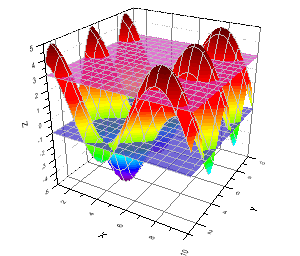Is f a additive function?
 Let
f
:
[
0
,
1
]
→
R
be a continuous function such that
Let
f
:
[
0
,
1
]
→
R
be a continuous function such that
{ f ( x 1 ) + f ( x 2 ) + f ( x 3 ) + ⋯ + f ( x 1 1 5 1 ) = 1 x 1 + x 2 + x 3 + ⋯ + x 1 1 5 1 = 1
for all x 1 , x 2 , x 3 , ⋯ x 1 1 5 1 ∈ [ 0 , 1 ] .
Given that f ( 0 ) = 7 , find f ( 2 0 1 4 1 ) .
The answer is 3.
This section requires Javascript.
You are seeing this because something didn't load right. We suggest you, (a) try
refreshing the page, (b) enabling javascript if it is disabled on your browser and,
finally, (c)
loading the
non-javascript version of this page
. We're sorry about the hassle.
1 solution
we can find f(0.5) by putting two of the variables equal to 0.5 and the rest equal to 0. then put 1007 of the variables equal to 1/2014. one equal to 1/2 and the rest equal to 0. done.
Log in to reply
yup,that is right.....i just wanted to show a generalization
At first, let x 1 = x 2 = 2 ( x + y ) , x 3 = 1 − x − y and x 4 = . . . x 1 1 5 1 = 0 .
Hence, 2 f ( 2 x + y ) + f ( 1 − x − y ) + 1 1 4 8 f ( 0 ) = 1
Next, put x 1 = x , x 2 = y , x 3 = 1 − x − y and x 4 = . . . = x 1 1 5 1 = 0
Hence, f ( x ) + f ( y ) + f ( 1 − x − y ) + 1 1 4 8 f ( 0 ) = 0
Therefore, 2 f ( 2 x + y ) = f ( x ) + f ( y ) .This is Jensen's functional equation with the solution f ( x ) = c x + d for some constants c and d
Put x 1 = 1 and remaining all x i = 0 .
So, c + d + 1 1 5 0 f ( 0 ) = 1 .
Again, put x 1 = x 2 = 2 1 and all other x i = 0 .
So, c + 2 d + 1 1 4 9 f ( 0 ) = 1
Solving the two equations, d = f ( 0 ) = 7 and c = 1 − 1 1 5 1 f ( 0 ) = − 8 0 5 6
Hence, f ( 2 0 1 4 1 ) = ( − 8 0 5 6 ) 2 0 1 4 1 + 7 = − 4 + 7 = 3